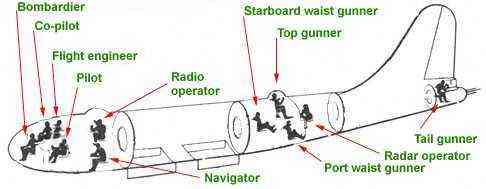

In total, a stunning 18,482 B-24s were produced to wage war against the Axis powers. The Doolittle Raid's B-25s were the only aircraft to. James Doolittle humiliated the Japanese military by penetrating some of the world’s most formidable air defenses and dropping bombs a stone’s throw away from the Emperor’s Palace. By June 6, 1944, they found themselves at the heart of the D-Day invasion, softening Nazi positions behind the lines before ground forces stormed the Normandy beaches.Īlthough retired by the end of the war, B-24s saw service in every theater of the conflict, from Africa to Germany and India to the Pacific Islands. The B-25 bomber gained fame in the daring April 1942 Doolittle Raid. They also bombed German oil refineries and attacked critical targets in Italy, changing the tide of the Allies’ Mediterranean campaign.ĭuring Operation Carpetbagger in 1943, some Liberators were painted black and flown under the cover of night to supply French Resistance fighters with supplies and weapons, needed to support the upcoming D-Day invasion. The Liberators’ range proved invaluable in scouting and destroying German U-boats, creating safe passage for Allied transports and destroyers across Europe. A B-24 could reach 290 miles per hour and carry a 5,000-pound bomb load for 1,700 miles, giving it a longer range, greater speed and a bigger payload than its B-17 cousin.īy 1941, B-24s were being shipped to Great Britain, where they were given the name Liberator and adapted for a variety of purposes, including coastal patrol, protecting critical Atlantic cargo ship convoy crossings. In time the B-24 would boast a long, tapered wing atop its fuselage, which allowed impressive long-range cruising capabilities. Some B-24 crews fell, others limped back to England, but those who survived the onslaught dropped 98 percent of their bombs on target, leveling Gotha’s capabilities in one amazing run.Ĭonsidered one of the best examples of precision bombing of the war, the raid on Gotha devastated German aircraft production and established the B-24 as one of the Allies’ most trusted bombers.Ĭonceived in 1938 by Consolidated Aircraft, a Lockheed Martin legacy company, the original B-24 prototype was designed to fly faster and carry a larger payload than the US Army Air Corps’s B-17 Flying Fortress. Then came a firestorm of antiaircraft cannon shells, rockets and air-burst bombs, turning the skies into a hellish expanse of bullets, smoke, and flak. How do You position the team I usually send the bomb aimer already before takeoff to the aiming station, get the mid-turret-gunner to the nose-turret and man the mid-turret with the engineer. Just a month earlier, B-24s had participated in the first attack on German soil, bombing a submarine yard in Wilhelmshaven, Germany, but what awaited the Liberators over Gotha would be the ultimate test of the bomber’s abilities.Įighty minutes into their flight, German fighters swooped in, taking their toll on the B-24 squadrons. Bomber Crew > General Discussions > Topic Details. On February 24, 1943, three squadrons of B-24 Liberators-goliath, four-engine, 56,000-pound bombers-streaked toward Germany to strike Hitler’s vaunted Luftwaffe at its heart, targeting a key production facility in the town of Gotha, Germany.


 0 kommentar(er)
0 kommentar(er)
